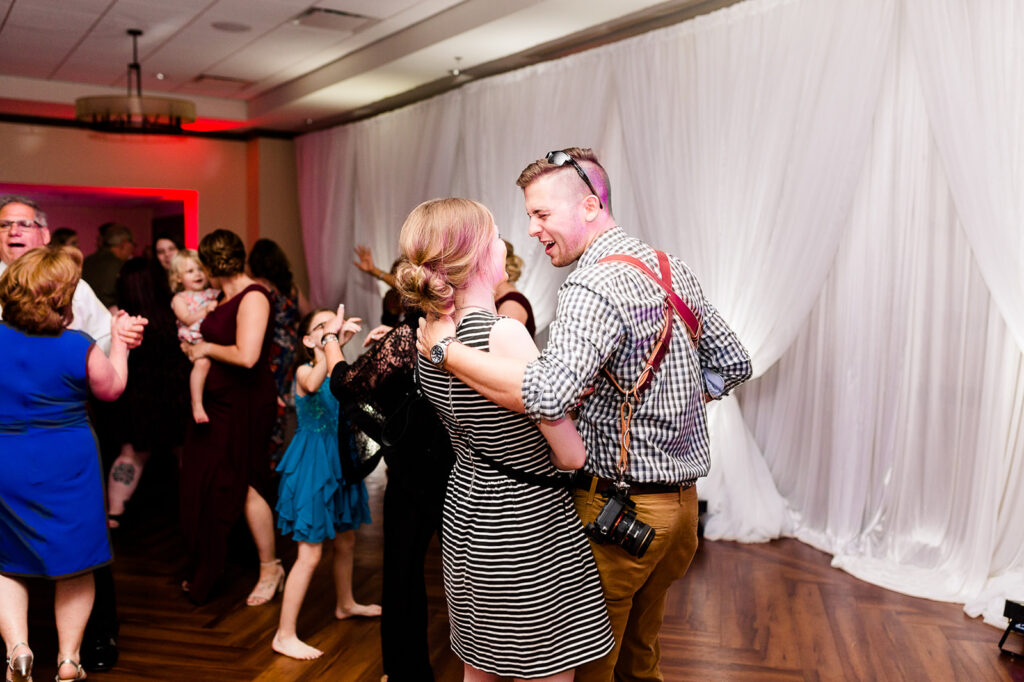
Let’s dive into an honest look at what it really means to be a wedding photographer. After shooting hundreds of weddings since 2015, we’ve experienced every high and low this career can throw at you.
Before we explore the ups and downs of this career path, it’s worth noting that success starts with understanding wedding photography basics and having reliable camera gear. You’ll need to learn how to handle challenging lighting, create a solid timeline, and consider starting as a second shooter to gain experience. Once you have these foundations in place, you can better evaluate if wedding photography is right for you.
Whether you’re considering making the switch to wedding photography or just curious about what we do, this list of “pros” and “cons” will give you the unfiltered truth.
Table of Contents
- PRO #1 – It’s Seasonal
- PRO #2 – It can pay well
- PRO #3 – You Get to Meet New People All the Time
- PRO #4 – Travel on the dime of your business
- PRO #5 – Perfect Schedule For Kids
- CON #1 – It’s Seasonal – Wait Wasn’t That A Pro?
- CON #2 – Expect Lots of Nights and Weekends Away
- CON #3 – It’s Hard on Your Body
- CON #4 – It Can Be Stressful and Full of Pressure
- CON #5 – Health Insurance is on You
- Building Your Business Foundation
- Diversifying Your Income
- Preventing Burnout and Maintaining Mental Health
- Staying Current with Technology and Trends
- Community Building and Networking
- Final Thoughts
PRO #1 – It’s Seasonal
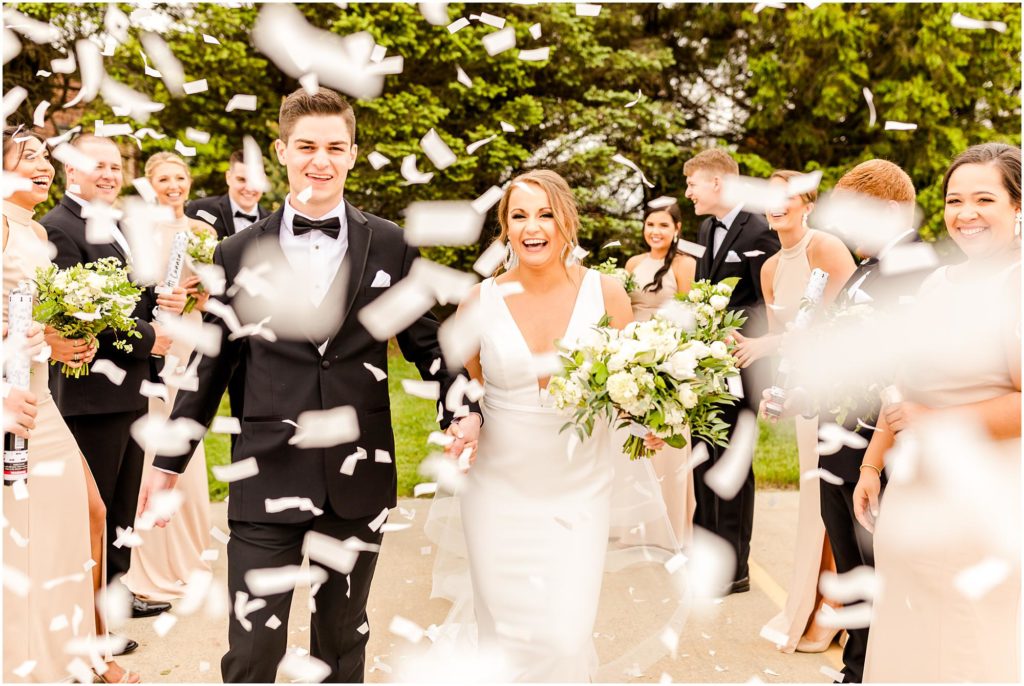
This aspect of wedding photography is fascinating because it’s both a blessing and a challenge. Think of it like this: From May through October(atleast for us in Illinois), we’re running at full speed, capturing beautiful moments and building our income. Then winter arrives, and everything shifts gears.
About 90% of our income comes in during those six months of peak season. During the busy months, our bank account grows substantially – but here’s the key: you need to be strategic about managing that income. We’ve learned to treat those busy months like squirrels gathering nuts for winter. It’s all about proper planning and budgeting.
Here’s what makes the seasonal nature work in your favor: With smart financial planning, you can create a lifestyle that gives you the best of both worlds. During peak season, you’re building wealth and creating amazing memories for clients. Then, during the off-season, you have time to focus on business development, family time, and personal projects. We use this time to update our workflows, plan marketing strategies, and even take some well-deserved vacation time.
PRO #2 – It can pay well
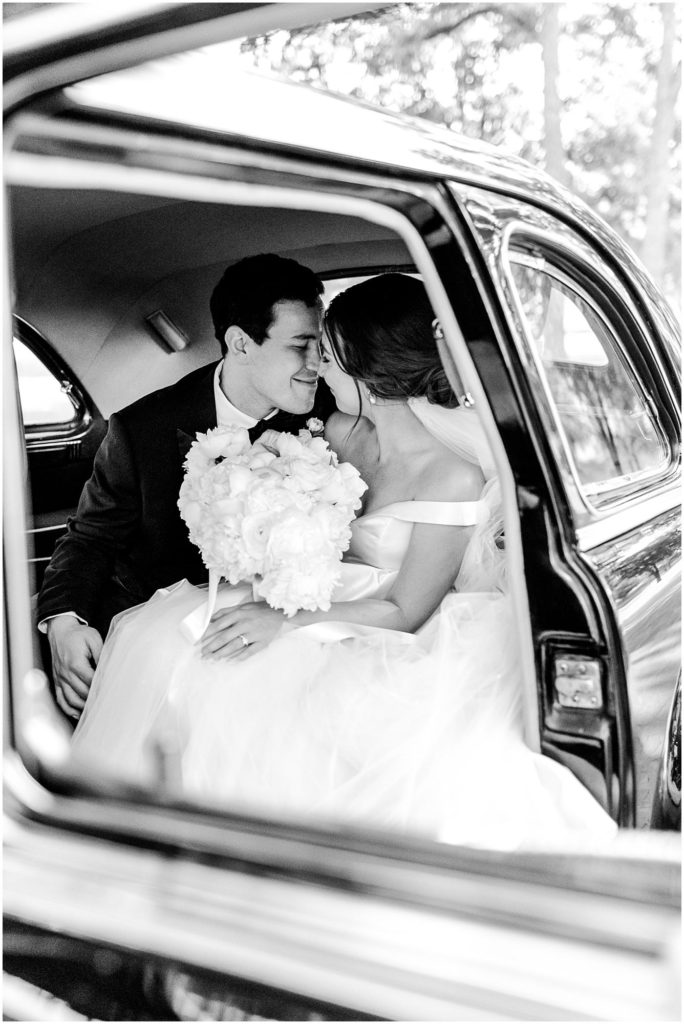
Let’s talk real numbers here. Wedding photography isn’t just about showing up with a camera – it’s about Let’s talk real numbers here. Wedding photography isn’t just about showing up with a camera – it’s about running a legitimate business that can generate serious income. When we first started, we were charging entry-level rates like everyone else. Depending on your market and experience level, you can command anywhere from $3,000 to $15,000 per wedding.
The income trajectory for wedding photographers varies significantly based on experience level:
- Beginners typically earn around $10,000-$25,000 annually while building their portfolio
- Mid-career photographers often make $36,000-$75,000 after expenses, depending on booking volume
- Experienced professionals charging $5,000+ per wedding can exceed $100,000 annually in affluent markets
The key to growing your rates isn’t just about improving your photography skills (though that’s crucial). It’s about:
- Understanding your market’s price ceiling
- Delivering consistent, high-quality service
- Building a strong brand and reputation
- Managing your business finances professionally
- Creating remarkable client experiences
Remember: Some of the weddings we photograph have overall budgets exceeding $100,000. Couples investing that much in their wedding day understand the value of professional photography. However, don’t expect to get those kinds of weddings immediately. Focus first on building a solid portfolio, building your brand and unforgettable experience. If you do that, the money will follow. Just don’t put all the emphasis on money. It will make your experience feel more transactional and less relational. Relationships are what build strong businesses. It should always be about what is best for the couple.
PRO #3 – You Get to Meet New People All the Time
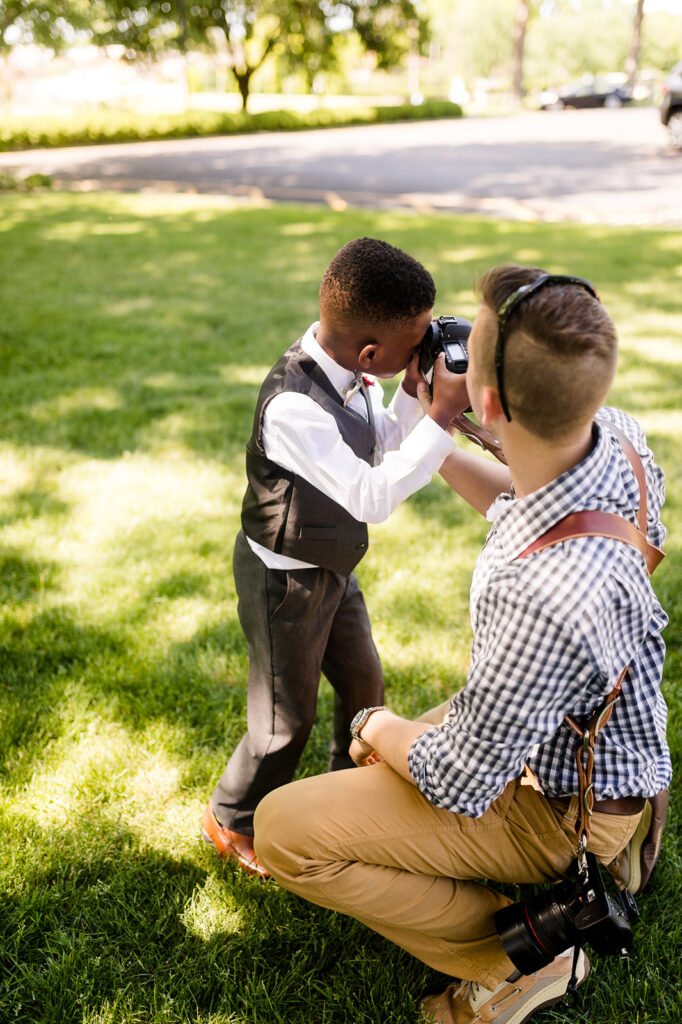
The social aspect of wedding photography is one of its most rewarding elements. Every weekend brings new couples, new families, and new vendor relationships that can turn into valuable industry connections. And here’s a secret most people don’t talk about – you don’t have to be a natural extrovert to excel in this field.
Take Caitlin, for example. She considers herself an introvert who’s learned to be outgoing on wedding days. It’s what we call being a “professional extrovert” – someone who can turn on that engaging personality when needed, then recharge during the off-season. This balance makes wedding photography uniquely suited for both personality types.
We’ve found that building genuine connections with our couples leads to better photos and more referrals. During our consultation meetings, we focus on getting to know their story, their families, and what matters most to them on their wedding day. These relationships often extend beyond the wedding day, with many couples becoming friends and returning for family photos later.
PRO #4 – Travel on the dime of your business

While we primarily shoot within a 6-hour radius of our home base (with about half our weddings just 5 minutes away), the potential for travel in this business is significant. Here’s what you need to know about making travel work for your business:
For local weddings:
- Track your mileage for tax purposes
- Build travel costs into your packages for venues beyond a certain radius
- Consider charging a flat-rate travel fee for destinations requiring overnight stays
For destination weddings:
- Document all travel expenses meticulously
- Understand which expenses are tax-deductible (consult your CPA)
- Consider building in an extra day for scouting locations
- Factor in backup equipment needs when traveling
Remember, while the idea of jetting off to Paris for a wedding sounds glamorous, successful travel wedding photography requires careful planning and business acuity. Always check with your CPA about specific deductions – the tax benefits can be significant when handled correctly.
PRO #5 – Perfect Schedule For Kids
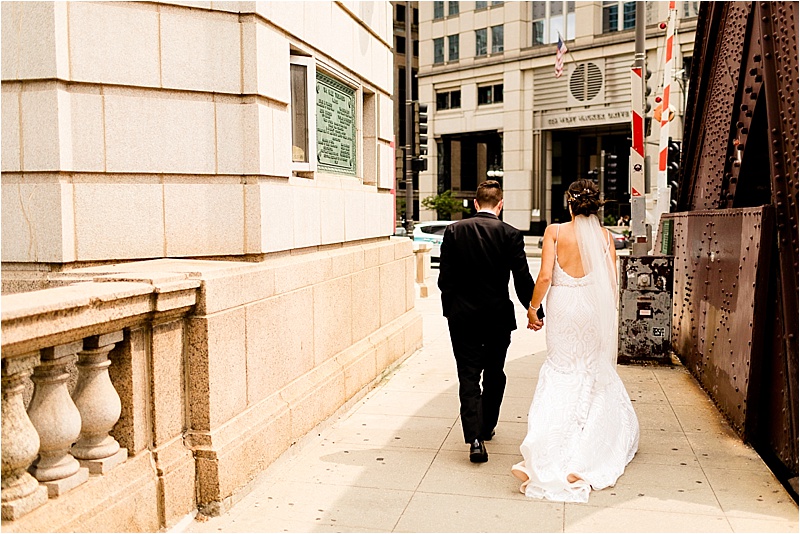
The flexibility of wedding photography makes it an ideal career for parents – with some strategic planning. During the week, you’re free to handle school drops-offs, attend events, and manage your editing schedule around family time. The catch? You’ll be working when most families are having weekend fun.
Here’s how to make it work:
- Block off specific weekends each month for family time during peak season
- Schedule your editing during school hours if possible
- Use the off-season for extended family time and vacations
- Consider hiring an editor during busy seasons to free up more family time
For couples shooting together like us, communication becomes crucial. We’ve learned to coordinate our schedules carefully, ensuring one person is always available for family responsibilities while the other handles business needs.
CON #1 – It’s Seasonal – Wait Wasn’t That A Pro?
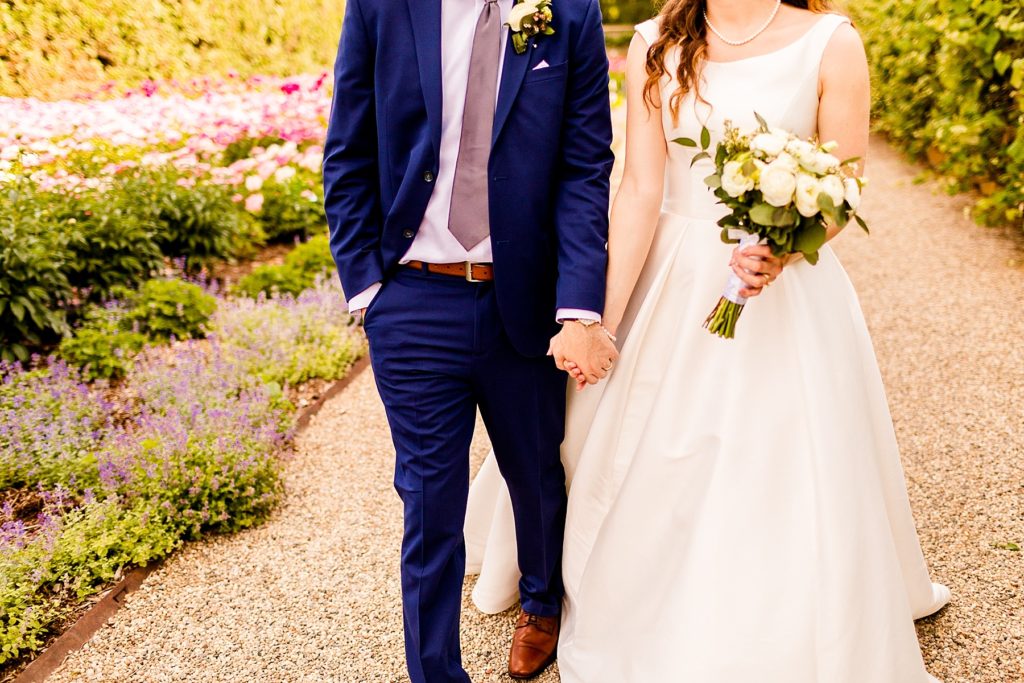
Let’s flip the coin on seasonality. While those busy months can feel like a financial windfall, managing Let’s flip the coin on seasonality. While those busy months can feel like a financial windfall, managing irregular income requires serious discipline. During our peak season (May-October), we might work 3-4 weekends per month, missing family events, summer barbecues, and prime beach weather. The reality? You’re trading your best-weather months for work.
Here’s what we’ve learned about managing seasonal income:
- Set aside 25-30% of peak season earnings for taxes and put it in a savings account earning 4-5% interest
- Create a 12-month budget that spreads your income evenly throughout the year
- Build an emergency fund covering 3-6 months of expenses for unexpectedly slow seasons
- Consider diversifying with portrait, commercial work, or educational offerings during winter
- Book your own vacations 12-18 months in advance (yes, really!)
If you’re shooting 20-25 weddings annually like we do, that’s a significant time commitment. Starting with 5-10 weddings per year while keeping your day job can help you test the waters. Just remember – once those dates are booked, they’re set in stone. We learned the hard way that trying to squeeze in last-minute family events during peak season is nearly impossible.
CON #2 – Expect Lots of Nights and Weekends Away
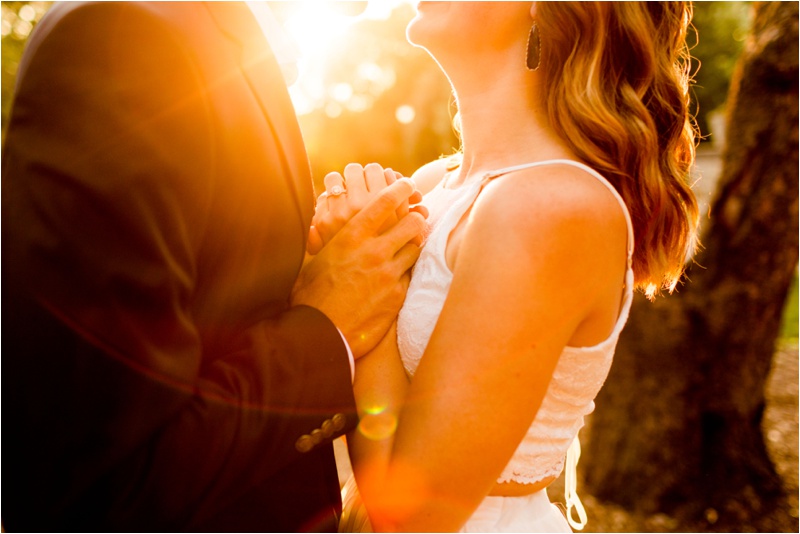
Wedding photography isn’t just about the 8-10 hours you spend shooting each wedding. You’re also Wedding photography isn’t just about the 8-10 hours you spend shooting each wedding. You’re also dedicating weekday evenings to engagement sessions, client meetings, and venue walk-throughs. Here’s what a typical week might look like during peak season:
Monday-Thursday:
- Editing previous wedding(s)
- 2-3 evening engagement sessions
- Client consultations
- Vendor meetings
- Email management
- Social media updates
Friday-Sunday:
- Wedding day (8-12 hours)
- Same-day sneak peeks
- Equipment prep for the next wedding
We’ve found success in limiting our workload to maintain quality over quantity. Instead of shooting 40+ weddings a year, we focus on providing exceptional service to fewer clients at a higher price point. This approach helps prevent burnout while still maintaining a good living.
One challenging weekend last year, we photographed a Friday evening wedding followed by a Saturday all-day event. By Sunday morning, we were physically and mentally exhausted. That experience taught us to space our bookings more carefully and never schedule back-to-back full weddings without recovery time.
CON #3 – It’s Hard on Your Body
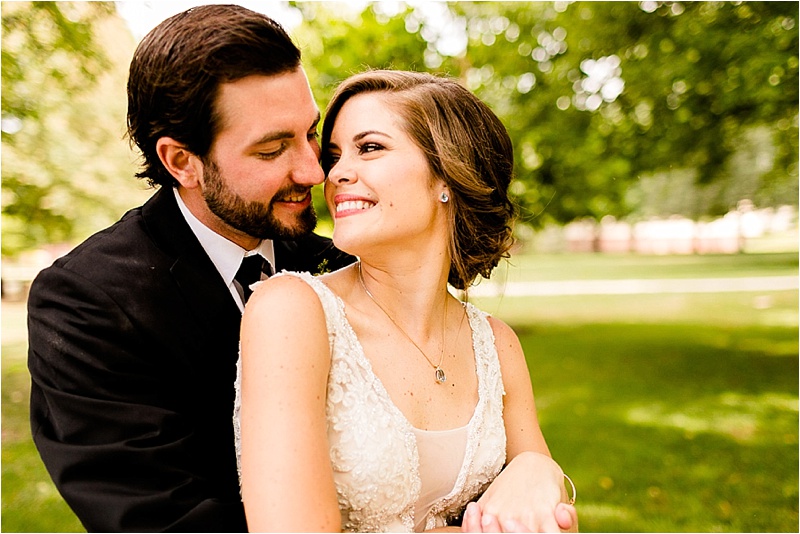
Let’s get real about the physical demands. A typical professional camera with accessories weighs 10-15 Let’s get real about the physical demands. A typical professional camera with accessories weighs 10-15 pounds, and you’re carrying it for 8-12 hours while constantly moving, squatting, and climbing for the perfect shot. Our hard-learned lessons about physical health include:
Essential Health Management:
- Regular chiropractic care and massage therapy
- Core-strengthening exercises like situps and planks
- Proper camera strap systems (We use and love the HoldFast Straps)
- Comfortable, supportive shoes (fashion comes second…unless you are Caitlin!)
- Regular stretching after weddings
My experience with lower back pain taught us to prioritize physical health. We now treat our bodies like athletes – because on wedding days, that’s essentially what we are. Investing in quality gear that distributes weight properly and maintaining good physical condition isn’t optional in this career.
After a few grueling wedding seasons in 2018 and 2019, I started experiencing back pain from carrying equipment all day long. Working out regularly helped me correct the issue and strengthen the supporting muscles.
CON #4 – It Can Be Stressful and Full of Pressure
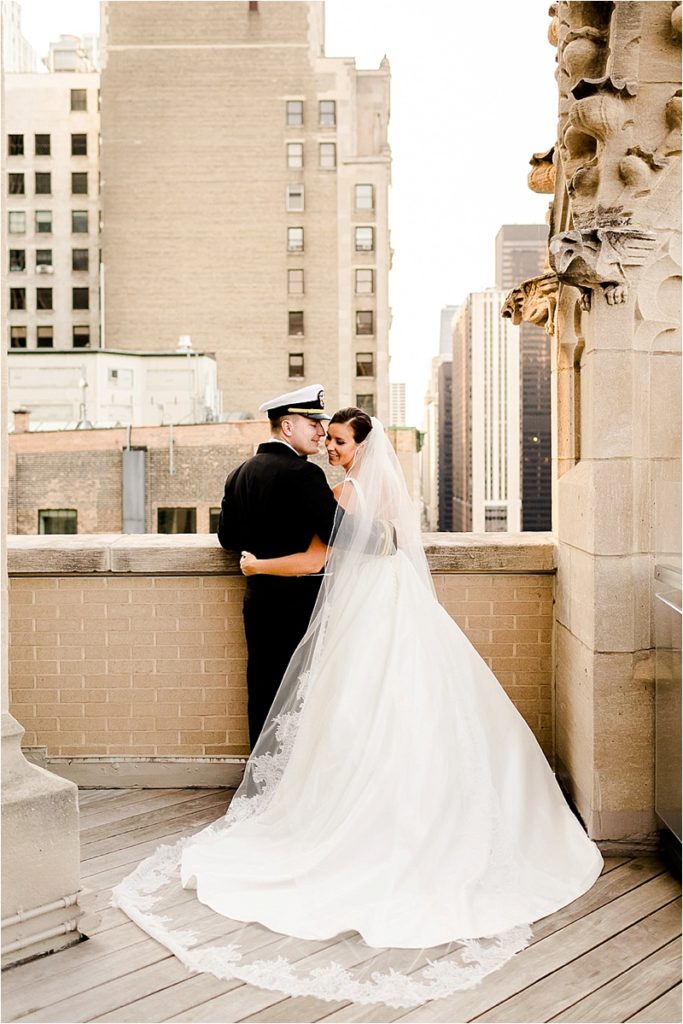
Wedding day stress is no joke – you’re essentially a photographer, coordinator, and sometimes even therapist all rolled into one. After hundreds of weddings, we’ve developed strategies to manage the pressure while still delivering exceptional results.
Here’s what we’ve learned about stress management on wedding days:
First off, timelines are your best friend(if you need an example timeline, search no longer!). We build in buffer time everywhere – especially before the ceremony. That 30-minute cushion has saved us countless times when family members run late or hair and makeup takes longer than planned. Think of it as wedding day insurance.
About that infamous “first kiss” pressure – yes, it’s the one truly unrepeatable moment of the day. Our solution? We always have multiple cameras on this moment, and we’ve developed a foolproof system where one photographer captures the traditional straight-on shot while the second gets creative with angles. This redundancy has saved us more than once.
Some other stress-reducing strategies we’ve implemented:
- Setting realistic expectations with clients during planning meetings
- Detailed shot lists shared with between us and any second shooters we may have
- Backup plans for every outdoor location
- Emergency kit with everything from safety pins to backup batteries
- Clear communication with other vendors before the wedding day
CON #5 – Health Insurance is on You
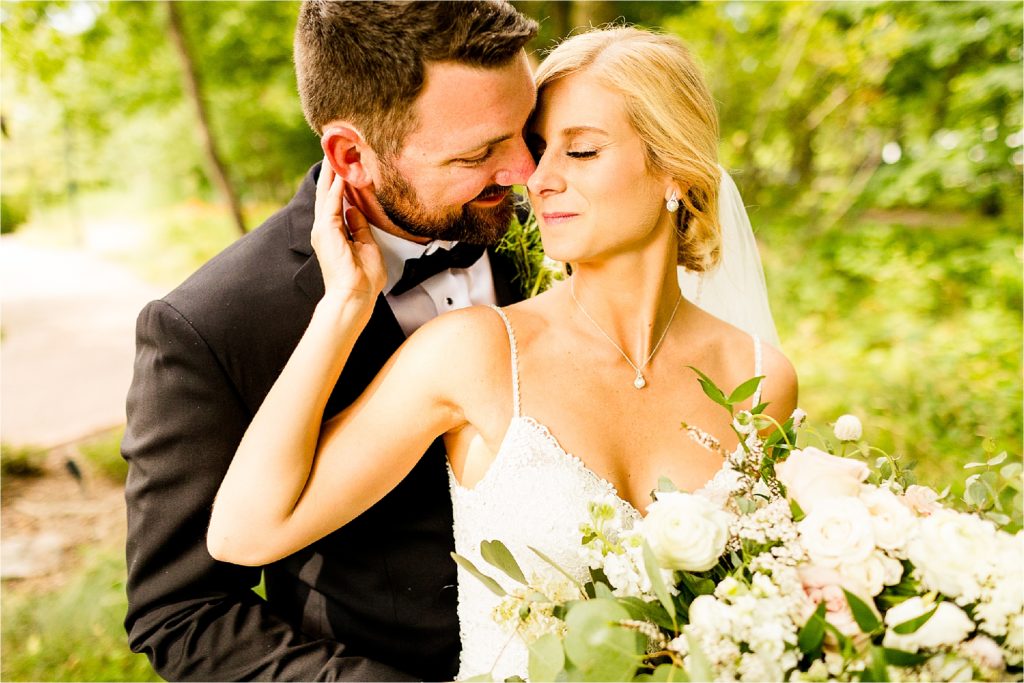
Let’s tackle the elephant in the room – benefits, or rather, the lack thereof. Coming from a traditional job with full benefits, this aspect of self-employment can feel overwhelming. Healthcare tends to be the biggest animal to tackle so this con will be focused on that, here is what we have learned:
Healthcare options for self-employed photographers have actually improved significantly. Beyond traditional insurance, there are several routes to consider:
- Health share ministries (like Christian Healthcare Ministries)
- Professional photographers’ associations that offer group rates
- ACA marketplace plans
- Health Savings Accounts (HSAs) combined with high-deductible plans
- Spouse’s insurance (if available)
The key is to start researching options before you make the full-time leap. We spent months comparing plans and talking to other self-employed photographers about their solutions. While health insurance costs are significant, they’re a predictable expense you can build into your pricing structure. We ended up landing on going with a health share ministry, it just makes the most sense for our family.
If you need more help here, check out this article written by the Dave Ramsey team!
Building Your Business Foundation

Beyond taking great photos, your long-term success depends on establishing solid business systems. Here’s what we’ve found essential after nine years in the industry:
Client Management Systems
Investing in client management software has been game-changing for our business efficiency. We use a comprehensive system that handles everything from initial inquiry to final delivery, sending automated reminders and questionnaires at exactly the right times. This automation has reduced our administrative time by about 10 hours per week while improving the client experience.
Pricing Strategy
Developing a sustainable pricing structure requires understanding both your costs and your market. We carefully track every business expense, including:
- Equipment depreciation and replacement costs
- Software subscriptions and editing time
- Marketing and advertising expenses
- Insurance and administrative costs
- Professional development and education
By understanding our true cost of doing business, we’ve created packages that ensure profitability while remaining competitive in our market. Remember that pricing too low isn’t just bad for your business – it devalues the entire profession.
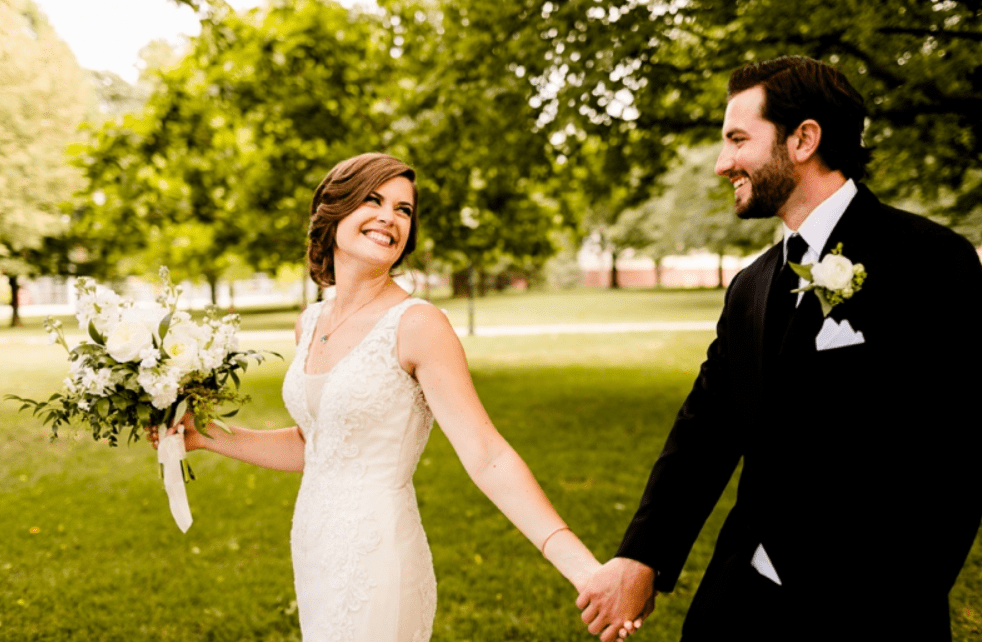
Diversifying Your Income
Relying solely on weddings for your entire income can create financial stress during slow seasons. We’ve successfully implemented several diversification strategies that have stabilized our annual revenue:
Complementary Photography Services
Expanding into related photography niches has been invaluable for our business stability. We’ve found that offering engagement sessions, family portraits, and maternity photography provides steady income during wedding off-seasons. These services often appeal to past wedding clients, making marketing easier and more cost-effective.
Educational Offerings
After shooting our first hundred weddings, we realized we had valuable knowledge to share. We now offer mentoring sessions, workflow templates, and editing presets that provide passive income year-round. These educational offerings not only supplement our revenue but also establish us as experts in our field.
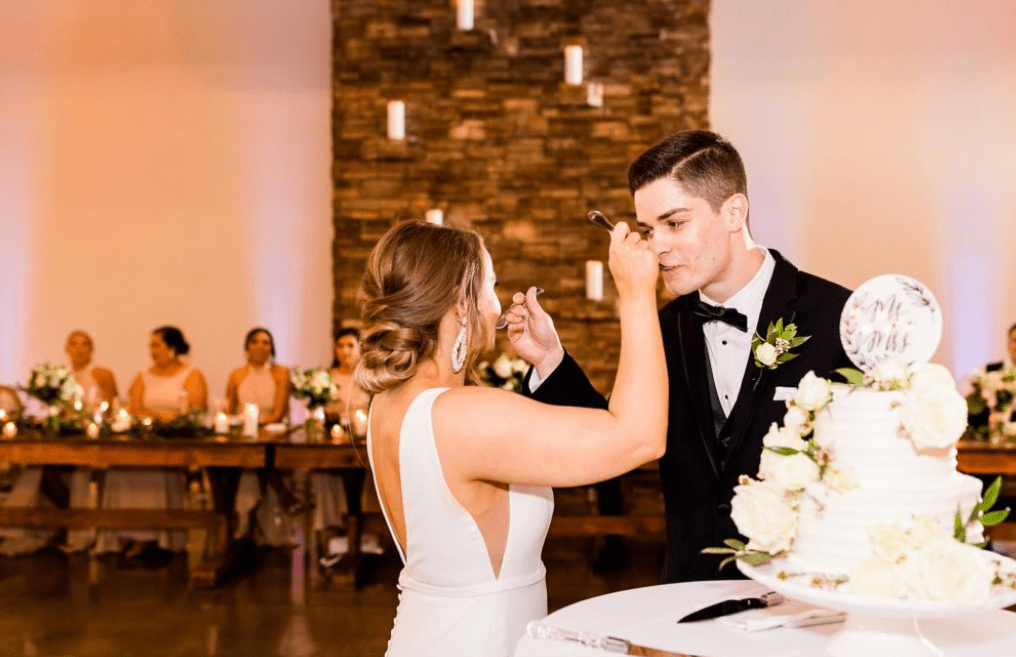
Preventing Burnout and Maintaining Mental Health
The creative and emotional demands of wedding photography make burnout a serious concern. Here are the mental health strategies that have helped us maintain a sustainable career:
Setting Clear Boundaries
Establishing firm boundaries with clients and ourselves has been crucial for our longevity in this business. We clearly communicate our working hours, response times, and availability to clients. We’ve also implemented technology boundaries, such as keeping our phones in another room during family time and using email autoresponders during vacations.
Prioritizing Rest and Recovery
We’ve learned to schedule recovery time after wedding weekends as non-negotiable. This might mean blocking off the Monday after a wedding for rest or scheduling a mid-season weekend off to recharge. We also take a complete break from client work for at least two weeks each year, allowing us to return with fresh creativity and energy.
Finding Meaning Beyond Business Success
Maintaining perspective about why we do this work helps prevent burnout. During difficult moments, we remind ourselves of the lasting impact our images will have for generations. Keeping thank-you notes from emotional clients helps us remember the true value of our work beyond the financial rewards.

Staying Current with Technology and Trends
The wedding photography landscape continues to evolve with technological advances. Staying current without chasing every new trend requires discernment and strategic implementation.
Equipment and Editing Innovations
While we don’t jump at every new camera release, we do regularly evaluate how technology can improve our client experience or workflow efficiency. For example, implementing AI-enhanced culling software reduced our post-processing time by 30%, allowing us to deliver galleries faster without sacrificing quality.
Marketing Platform Evolution
As social media algorithms and client behaviors change, we continuously adjust our marketing approach. We’ve found that focusing on client experience and generating referrals provides more stable business growth than constantly chasing new social platforms or advertising methods.
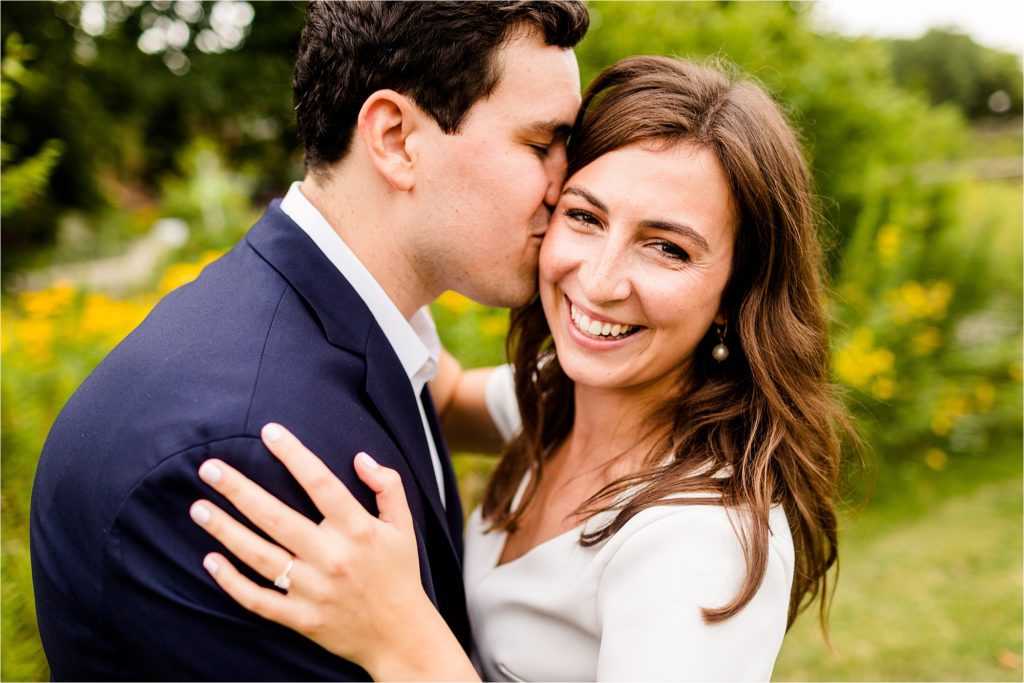
Community Building and Networking
The strongest foundation for sustainable success comes from building genuine connections within your community. Here’s how we’ve approached networking:
Vendor Relationships
Cultivating relationships with other wedding professionals has been invaluable for our business. We regularly meet with planners, venue coordinators, and other vendors to understand their needs and find ways to make their jobs easier on wedding days. These relationships have led to our most consistent source of qualified referrals.
Professional Associations
Joining professional photography organizations provided us with education, community, and credibility early in our career. These associations offer resources like contract templates, equipment insurance, and continuing education that helped us establish our business on solid footing.
Mentorship
Both receiving and providing mentorship has enriched our career journey. In our early years, investing in mentorship from established photographers accelerated our growth and helped us avoid common pitfalls. Now, we pay it forward by mentoring newer photographers, which keeps us connected to the freshness and enthusiasm that initially drew us to this field.
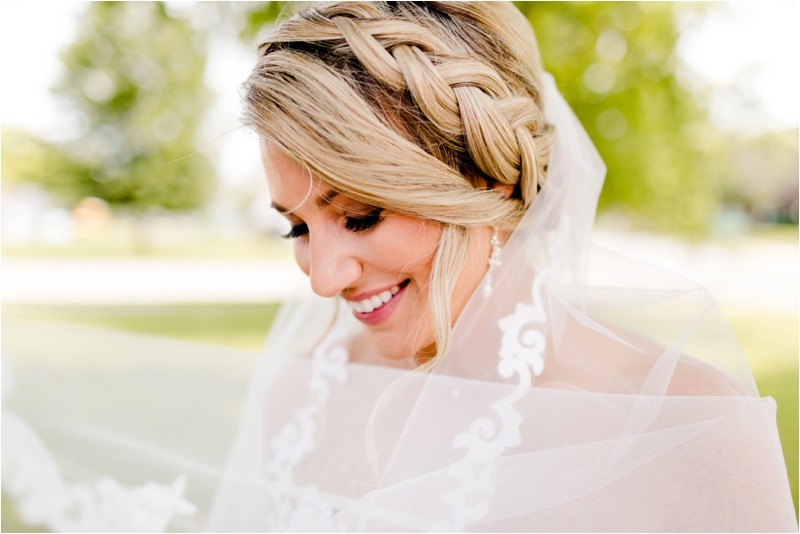
Final Thoughts
Wedding photography isn’t just a job – it’s a lifestyle choice that comes with distinct advantages and challenges. For us, the pros far outweigh the cons, but that’s because we’ve learned to manage the challenges effectively. Whether you’re considering this as a career change or a side hustle, understanding these realities will help you make an informed decision.
Remember, success in wedding photography isn’t just about taking great photos – it’s about building a sustainable business that fits your life goals. If you’re willing to put in the work, stay organized, and maintain your physical and mental health, this career can be incredibly rewarding both personally and financially.
Want to learn more about starting your wedding photography journey? Drop a comment below or reach out – we’re always happy to help fellow photographers grow in this industry.